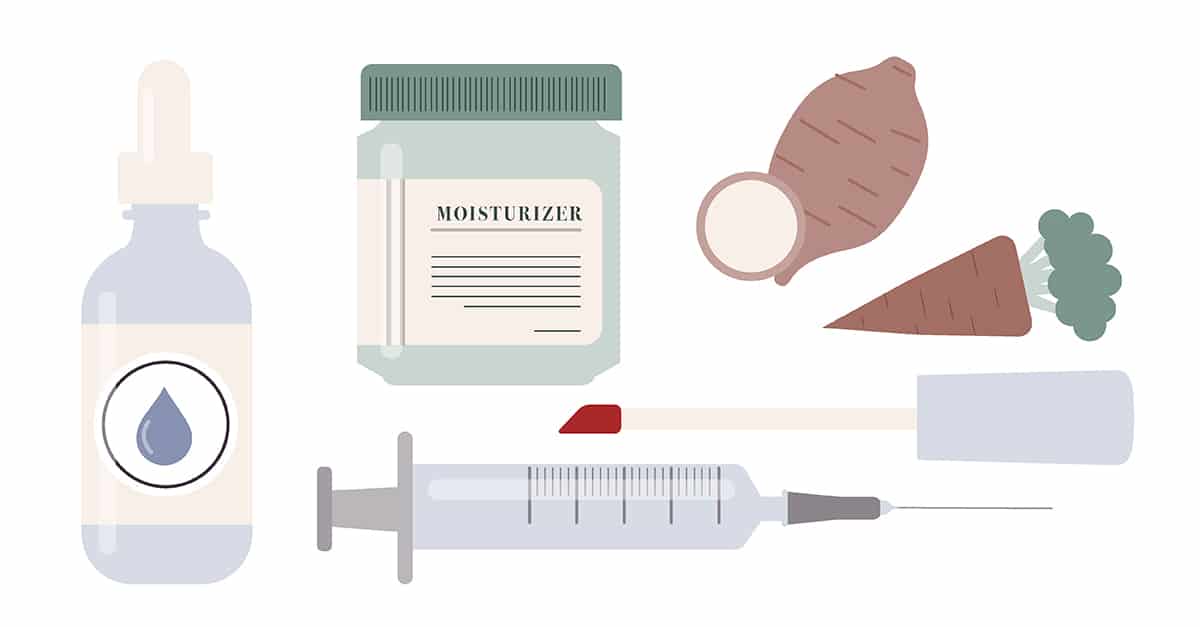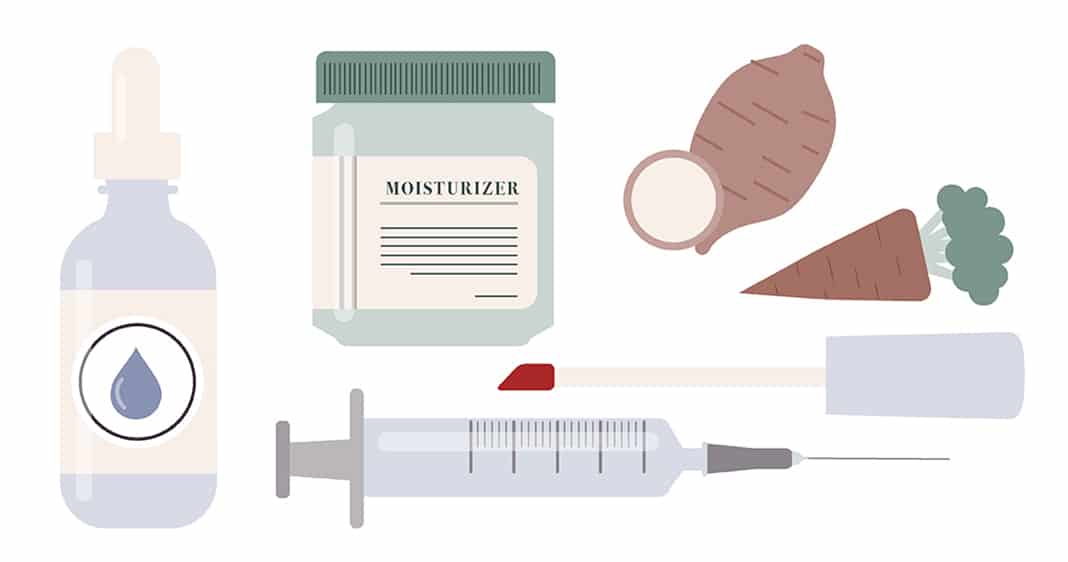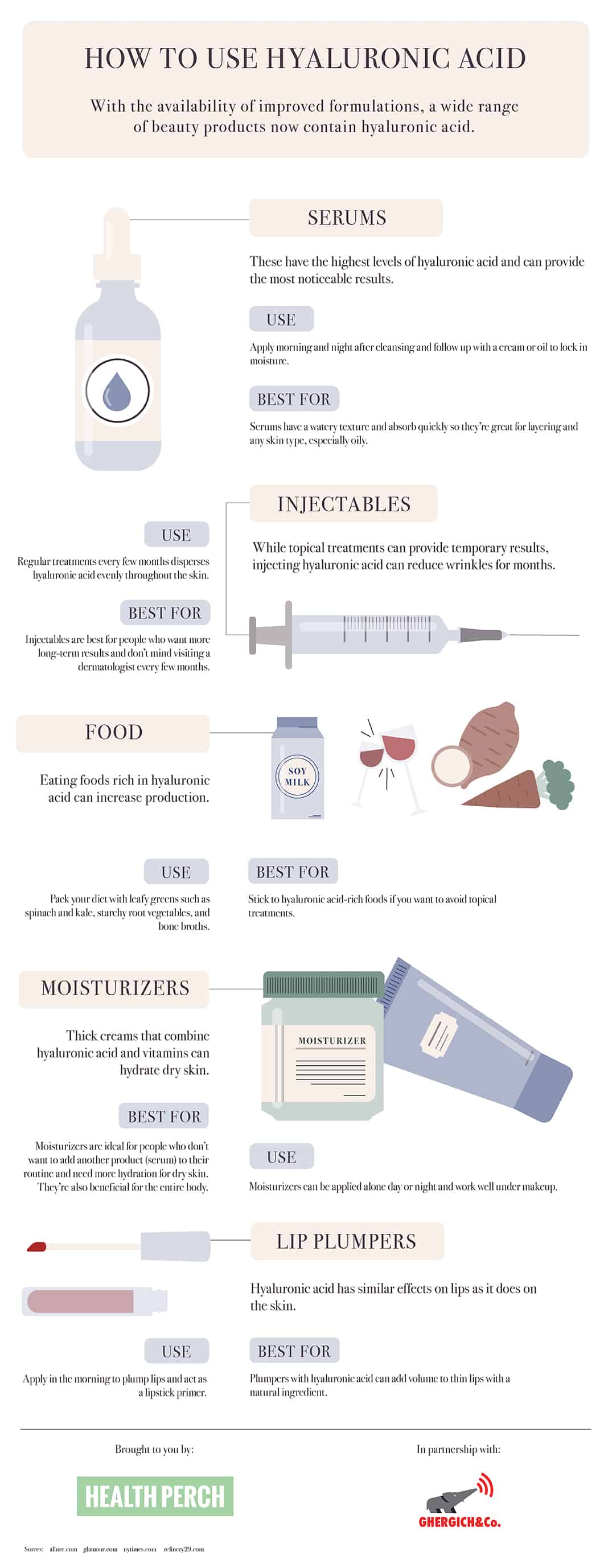Hyaluronic acid has been in beauty products for years, but it wasn’t until recently that it has been touted as an anti-aging must-have. Read on to discover the potential benefits of this compound and how to add it to your beauty routine.
What Is Hyaluronic Acid?
Hyaluronic acid, found naturally in our bodies, is a sugary molecule that keeps skin moisturized and joints lubricated. (It can hold up to 1,000 times its weight in water.) Hyaluronic acid is abundant in young skin, but aging and other factors slowly destroy it.
So why hasn’t it been a miracle anti-aging ingredient until now? Before, hyaluronic acid molecules were too large to penetrate skin, so any product containing the ingredient washed away easily. New formulations offer lower molecular weights, which may make hyaluronic acid more beneficial when applied topically.
Potential Anti-Aging Effects
Since hyaluronic acid retains moisture so well, it acts like a sponge in cells below the skin’s surface, which helps keep it plump. Studies show hyaluronic acid can improve skin long-term by reducing wrinkle depth and skin sagging. One study showed that a topical treatment with six different weights of hyaluronic acid molecules reduced the signs of aging, even after just one application. The smaller molecular weights were associated with elasticity, and the larger molecular weights improved surface hydration.
Hyaluronic Acid’s Counterpart: Sodium Hyaluronate
Sodium hyaluronate is a salt form of hyaluronic acid commonly found in beauty products, although both ingredients are usually referred to as the latter. Sodium hyaluronate has small molecules, so it easily penetrates skin. Hyaluronic acid, on the other hand, has to be bioengineered to reduce the molecular weight so it can better penetrate skin. Both are beneficial and safe.
When shopping for moisturizers with hyaluronic acid or sodium hyaluronate, look for other beneficial ingredients such as additional antioxidants or botanical extracts. Some companies may market serums as containing 70 percent or more of hyaluronic acid—but it’s actually a percentage of the total solution, which is mostly water. If they contained that much, the serum wouldn’t be liquid. It’s hard to tell exactly how much hyaluronic acid serums contain, but the industry standard is typically 1 or 2 percent.
When to Add Hyaluronic Acid to Your Skincare Routine
Lack of moisture can increase the appearance of wrinkles and fine lines in aging skin. The key molecule for hydration is hyaluronic acid, which decreases with age starting in our 20s. Before skin starts to show significant signs of aging, serums and moisturizers with hyaluronic acid are safe and beneficial to use.
In your 30s, 40s, and 50s, injectables can restore volume and plump sagging skin. Since the body doesn’t recognize it as a foreign substance, they’re also safer than many other injectables so allergy tests are not required. While hyaluronic acid is safer, side effects such as redness, swelling, or more serious allergic reactions are possible. It’s important to discuss the possible side effects with your doctor and follow proper protocols if a reaction does occur.
Lifestyle choices such as diet and smoking can increase aging and the speed at which hyaluronic acid production decreases. To slow down the process, stick to a healthy diet and avoid smoking.


